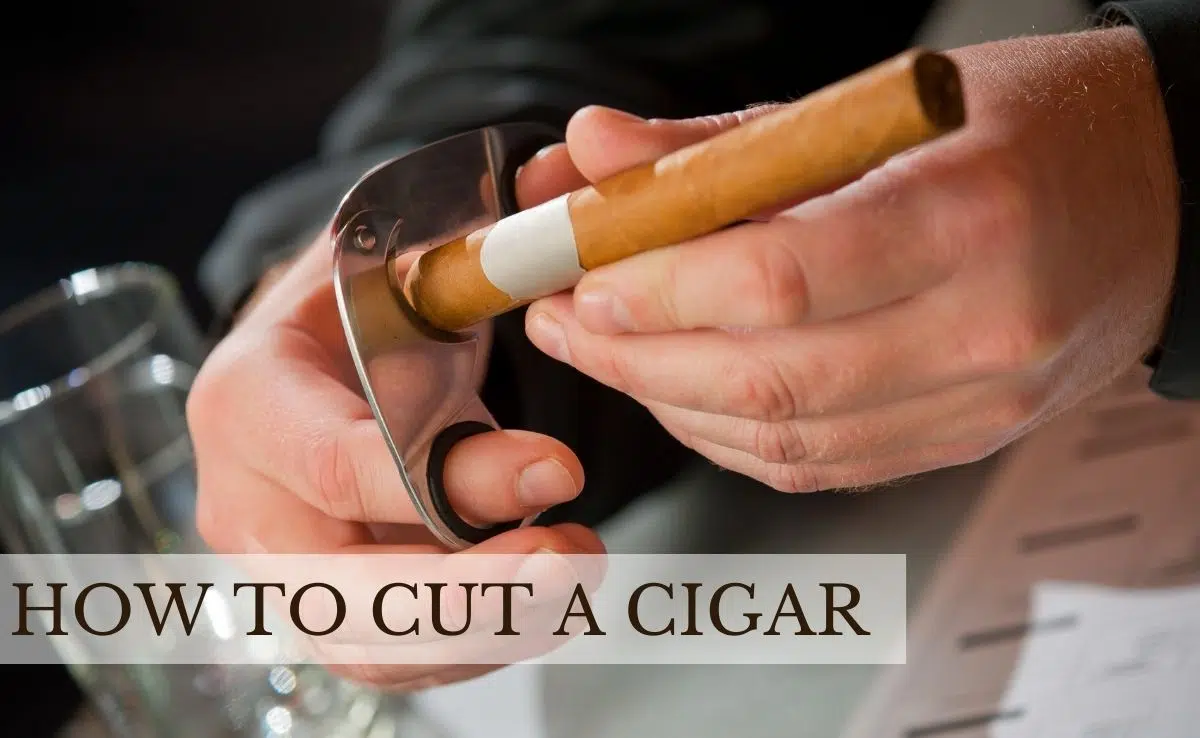To keep the lights on, we receive affiliate commissions via some of our links. Rankings remain impartial. Our review process.

There’s something alluring about cigars. They pack a certain mystique and conjure up romantic images of charming Havana streets, celebratory achievements, or even hazy basement poker games. People have been enjoying stogies for hundreds of years and while other smokables go in and out of fashion, the classic cigar has stood the test of time.
But for the uninitiated, entering this world for the first time can be a little intimidating. While many might know how to smoke a cigarette or a joint, puffing on a plump, aromatic stogie is a whole different ballgame. It’s understandable that newbies want to learn how to properly smoke a cigar, and that’s what we’re here for. Keep reading to find out everything you need to know to get you started in the fascinating world of cigars.
Choosing Your Cigar: 5 Common Types Of Cigars
Before we even talk about the art of smoking a cigar, you’ll need to understand the different types of cigars that are available out there. The list is comprehensive and exhaustive, so for now, we’ll focus on the most popular kinds for a crash course.
Robusto
This is probably the most popular cigar on the market and a great choice for your first smoke. It will certainly fill a room with thick smoke, and the Robusto will typically take around half an hour to forty-five minutes to finish.
Corona
Another classic, the Corona is a girthy cigar that is usually around six inches in length. It smokes nicely and is another good option for dipping your toes in the water for the first time.
Belicoso
The Belicoso is a bit sleeker and more slender in design and tends to be shorter than other cigars. It features a more concentrated smoke and will have a unique flavor and aromatics.
Panetela
The Panetela is a classy stogie that features a long and thin design that oozes with style. Because of the design, the Panetela gets a lot of its flavor from the wrapper leaf.
Lonsdale
This type of cigar tends to be a bit longer than a lot of the other options out there and subsequently smokes a little bit longer. It’s known for its nice burn and smooth draw.
Cutting a Cigar
Once you have your cigar picked out, the next step is to properly cut it. Sure, some people might skip this step or chop off the end in a crude manner, but that’s not a road you want to go down.
If you’re going to smoke a cigar, you’re going to want to have a proper clipper. Otherwise, you’ll be left with a frayed end and uneven smoke. A clean and fast cut is a good cut. You don’t need to take too much off (half an inch), but make sure that the clipper is sharp and clean.
Lighting the Cigar
While matches and regular lighters are fine for things like cigarettes and joints, a torch lighter is the preferred tool for lighting a cigar. The torch lighter provides a steady and even flame that stays true for the extra time that it takes to light a stogie.
Hold the end of your cigar to the flame and spin it in circles until it achieves a nice glow. At that time, you’ll know that it’s time to smoke. This is an art, not a science, and it will take some practice to get the technique down.
How To Smoke a Cigar (With Video)
As you may or may not have heard, you do not inhale cigar smoke. To get things started, take three or four quick puffs and then release the smoke. Repeat this process until you have some nice, thick white smoke billowing. At that point, the cigar is good to go, and you can sit back and enjoy it at your leisure.
Enjoy the fragrance of the cigar and savor the smoke in your mouth before releasing it back into the wild. You’ll want to have a puff every minute or so to make sure it stays lit.
Remember; you do not have to smoke the entire cigar in one sitting – especially if you are a beginner. Cigars can easily be extinguished and relit later in the day to enjoy. And keep in mind, great cigars can come from different places, not just Cuba.
Watch how the experts at The King Cigar Lounge do it:
FAQ
Here are a couple of other tips and tricks to have you smoking like a pro in no time.
Should I Remove The Label?
You’ve probably noticed that cigars come with a label that is stuck on them. It’s up to you whether or not you want to remove this label before you start smoking, or during the smoking session.
Our recommendation would be to smoke it down a little bit and let the heat loosen up the adhesive. By doing this, you will be able to remove it easily without doing any damage to the cigar’s delicate wrap.
When Should I Ash My Cigar?
Once you’ve been enjoying your stogie for a few minutes, you’ll begin to notice a head of ash develop. Your initial thought might be to knock the ash off, the way you would a cigarette or a doobie, but it’s not necessary.
You can let the ash be and admire it, as a big ash is usually a sign of a high-quality cigar. Once it reaches about an inch in length, gently roll the tip in an ashtray to remove the ash, rather than flicking it off the way you would with a cigarette.
Are You Ready To Enjoy Your First Cigar?
Hopefully, after reading this article, you will never have to ask how to smoke a cigar again. Cigars can be one of life’s fine enjoyments when done right, much like nice champagne or an elusive truffle.
But knowing how to do it right is your first step to enjoying it. Searching for some high quality cigars to practice with? Look no further than our reviews of the top monthly cigar clubs that ship rare smokes straight to your doorstep.
Tagged With: Cigars

